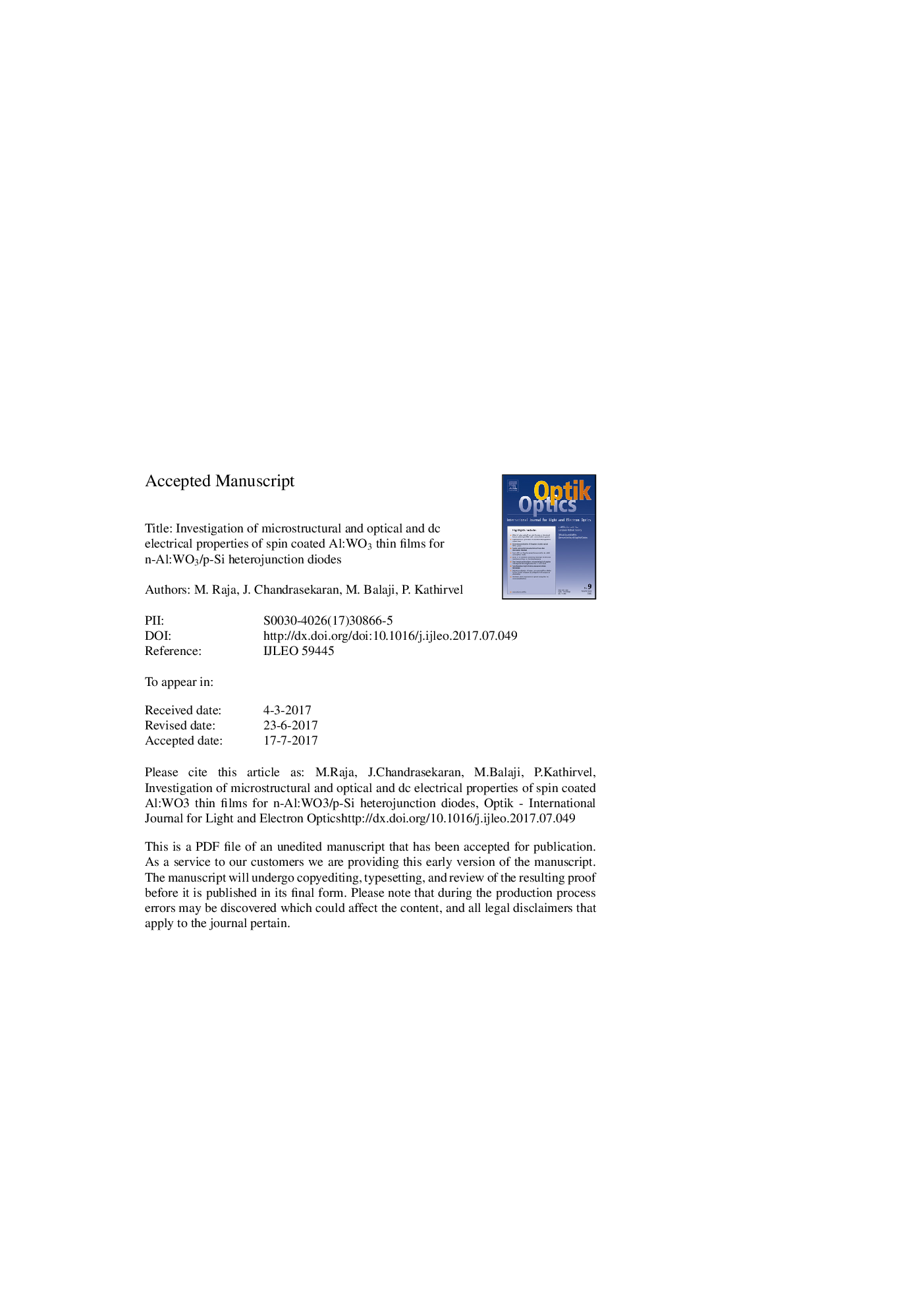| Article ID | Journal | Published Year | Pages | File Type |
|---|---|---|---|---|
| 5025307 | Optik - International Journal for Light and Electron Optics | 2017 | 36 Pages |
Abstract
Tungsten trioxide (WO3) thin films have been prepared via sol-gel spin-coating technique for different concentrations of Al (0, 3, 6, 9 and 12 wt.%) and investigated them by structural, optical, dc electrical and Al:WO3/p-Si heterojunction diodes. The XRD analysis reveals that the trivalent impurity of Al effectively influences the WO3. The UV-vis analysis shows an increase in the Al dopant that caused the band gap energy (Eg) to decrease. The SEM analysis shows that the size of the plate-like grains has reduced the Al:WO3 thin films. The composition ratio of W, O and Al elements has been confirmed by EDX spectrum. The dc electrical conductivity analysis has identified that Mott's 3D variable hopping (VRH) mechanism influences the Al:WO3 thin films. The Al:WO3/p-Si p-n heterojunction diode parameters of ideality factor (n), barrier height (ΦB) and series resistance (Rs) have been calculated using the J-V method. From the current density-voltage-temperature (J-V-T) analysis, the inhomogeneity of barrier heights was extracted using the thermionic emission mechanism with Gaussian distribution (GD) function. As a result, the 9 wt.% of Al:WO3/p-Si diode gives better results compared to the other Al:WO3/p-Si diodes.
Keywords
Related Topics
Physical Sciences and Engineering
Engineering
Engineering (General)
Authors
M. Raja, J. Chandrasekaran, M. Balaji, P. Kathirvel,
